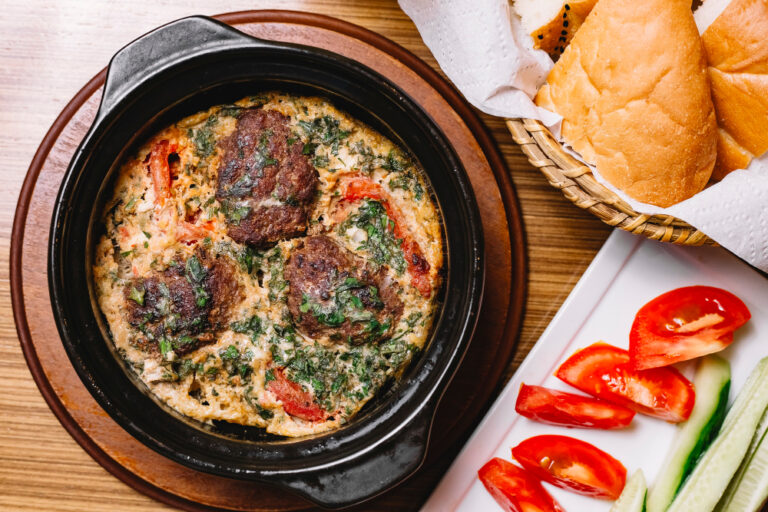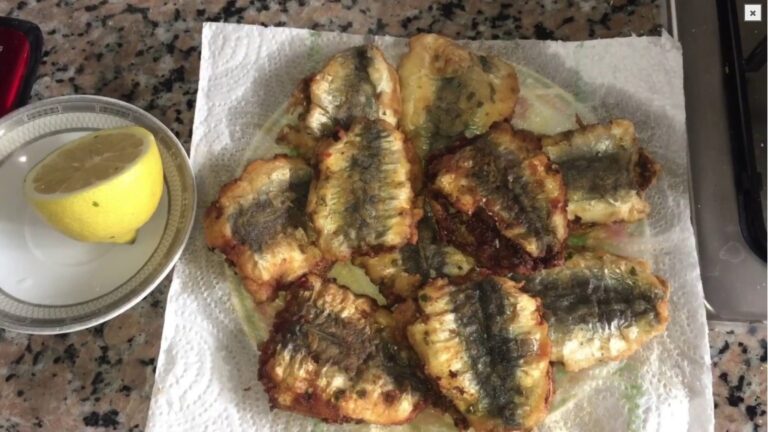
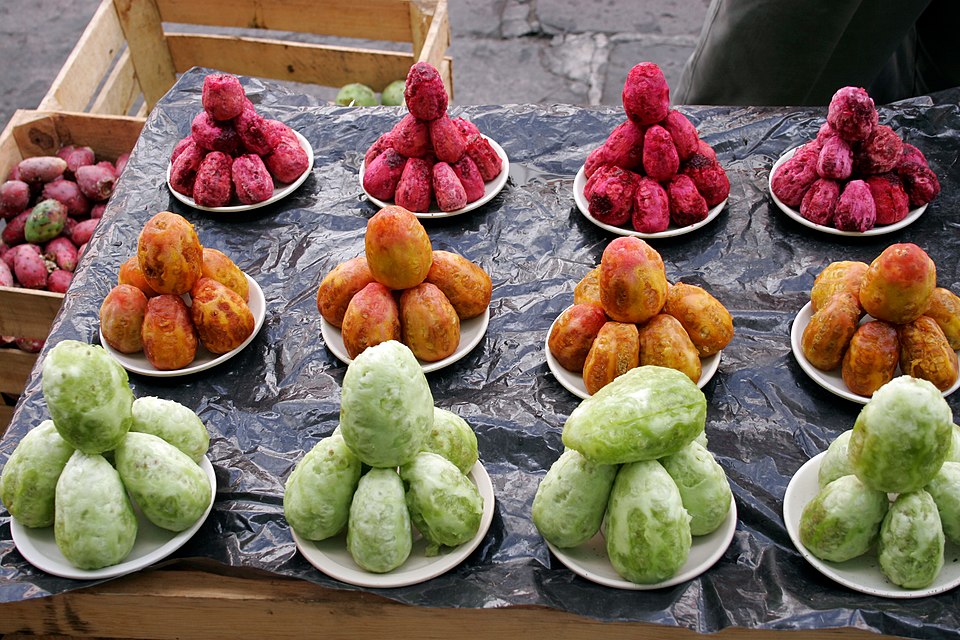
Morocco’s vibrant landscapes offer a tapestry of flavors, and among its most delightful natural treats is the Aknari, locally known as Z’aboul. This sweet prickly pear fruit, abundant in the arid regions of southern Morocco, is a refreshing delicacy cherished by locals and travelers alike. Whether you’re wandering through the bustling souks of Marrakech or exploring the serene expanses of the Atlas Mountains, learning how to eat Aknari is an essential part of experiencing Moroccan culture.

What Is Aknari?
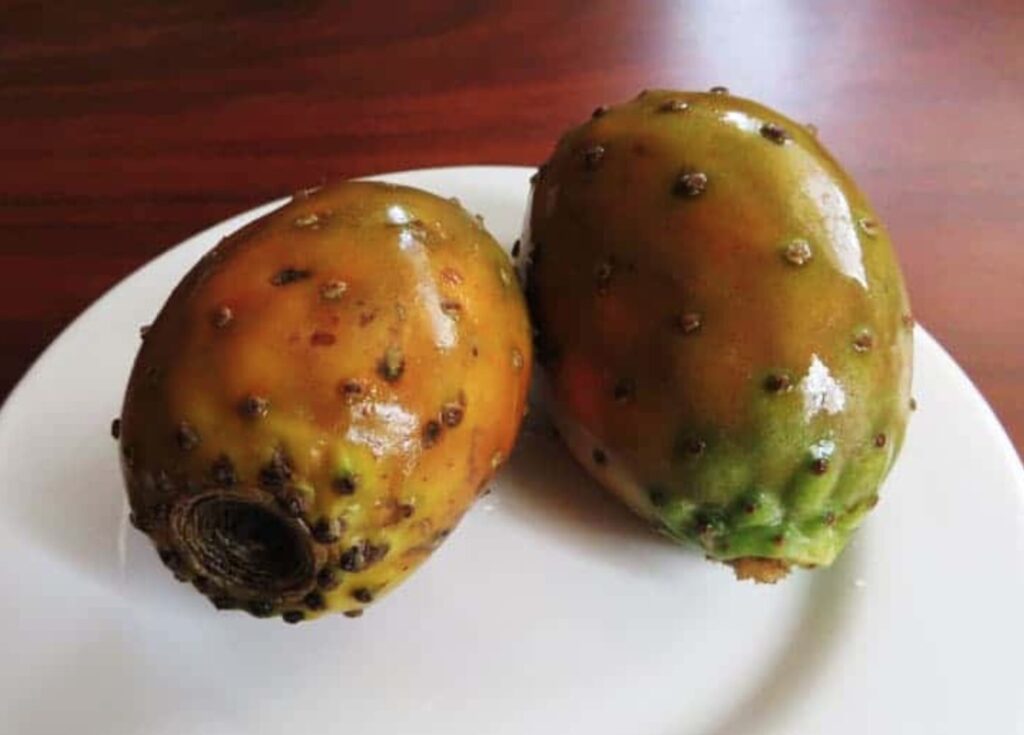
Aknari, or Z’aboul, is the Moroccan name for the prickly pear fruit, scientifically known as Opuntia ficus-indica. This cactus fruit thrives in the semi-arid climates of southern Morocco, particularly in regions like Tata, Guelmim, and Agadir (marocMaroc). The fruit’s vibrant colors range from deep reds to bright oranges, signaling its ripeness and sweetness.
Rich in vitamins C and E, antioxidants, and dietary fiber, Aknari is not only delicious but also offers numerous health benefits (EastFruit). Its high water content makes it a perfect hydrating snack during Morocco’s hot summer months.
How to Eat Aknari Safely and Deliciously
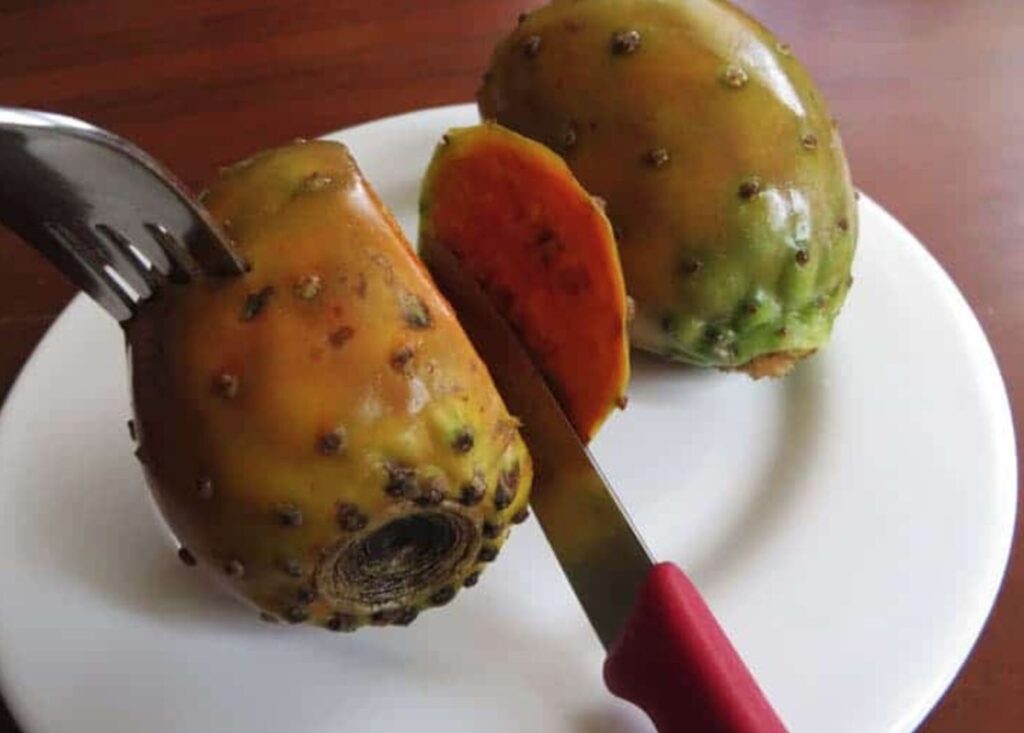
Consuming Aknari requires a bit of preparation due to its spiny exterior. Here’s a step-by-step guide to enjoying this sweet fruit:
1. Harvesting with Care
Aknari grows on the prickly pear cactus, which is adorned with tiny, hair-like spines known as glochids. To safely harvest the fruit, use thick gloves or kitchen tongs to avoid direct contact with these spines (Instructables).
2. Peeling the Skin
Once harvested, cut off both ends of the fruit using a sharp knife. Make a shallow incision along the length of the fruit. Gently peel back the skin using your fingers or a knife, revealing the juicy pulp inside. Be cautious, as the skin may still contain residual glochids.
3. Consuming the Pulp
The flesh of Aknari is sweet and succulent, containing numerous small seeds. You can eat the pulp directly by scooping it out with a spoon or biting into the fruit and spitting out the seeds. Alternatively, for a smoother texture, blend the pulp and strain it to remove the seeds, creating a refreshing juice (Instructables).
Must-Try Experiences with Aknari
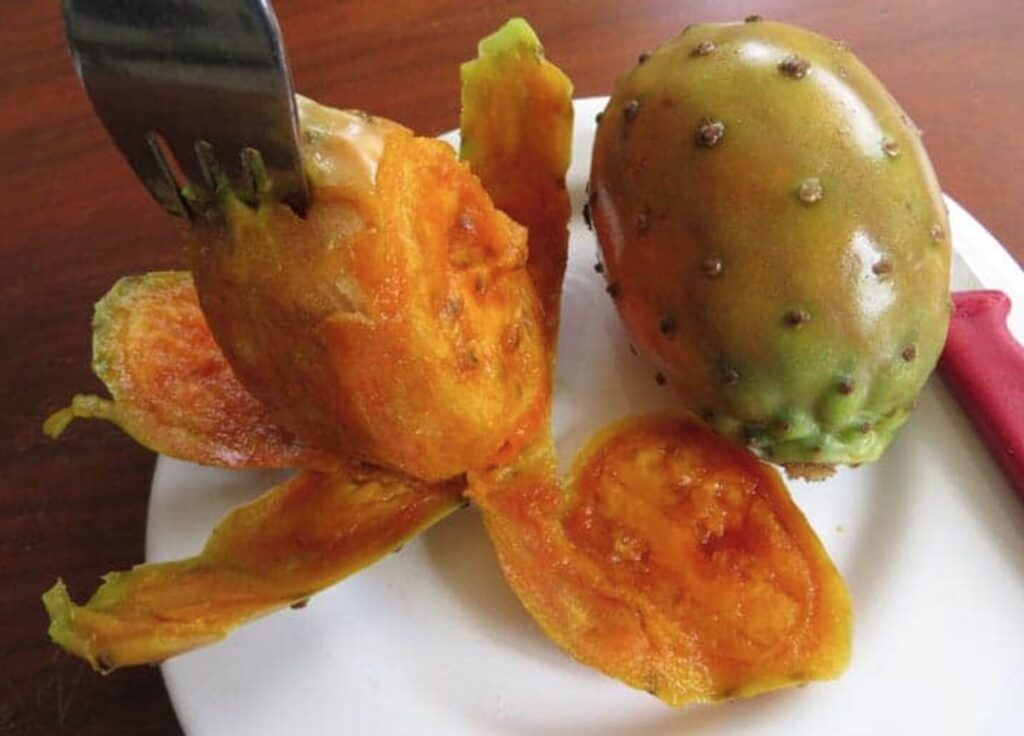
While enjoying Aknari on its own is delightful, there are several ways to incorporate this fruit into your Moroccan culinary adventures:
1. Aknari Juice
A popular way to enjoy Aknari is by making juice. Blend the peeled pulp with a bit of water and sugar to taste. Strain the mixture to remove seeds and enjoy a refreshing drink, especially during the hot summer months.
2. Aknari Jam
For a longer-lasting treat, Aknari can be transformed into a flavorful jam. Cook the pulp with sugar and lemon juice until it thickens, then jar it for a delightful spread on bread or pastries.
3. Aknari in Salads
Incorporate Aknari into fresh salads by combining the pulp with other fruits like figs and pomegranate. This combination offers a burst of sweetness and is a popular choice during Moroccan summers (moroccancuisinemarocaine.blogspot.com).
Travel Tips and Cultural Insights
When traveling in Morocco, especially in the southern regions, keep an eye out for Aknari vendors. These local sellers often offer the fruit freshly peeled and ready to eat. It’s a convenient and authentic way to experience this Moroccan delicacy.
Seasonality
Aknari is typically in season from July to September. During this period, the fruit is at its ripest and most flavorful. Visiting during these months ensures you experience Aknari at its best.
Cultural Significance
In Moroccan culture, Aknari is more than just a fruit; it’s a symbol of resilience and resourcefulness. The prickly pear cactus thrives in harsh conditions, much like the people of Morocco who have adapted to their environment over centuries.
Traveler Stories: Aknari Adventures
Many travelers have shared their experiences with Aknari, highlighting its refreshing taste and the joy of discovering it in Morocco’s landscapes. One traveler recounts stopping at a roadside stall in the Atlas Mountains, where a local vendor offered freshly peeled Aknari. The sweet, hydrating fruit was the perfect respite after a long hike.
Another traveler describes visiting a cooperative in southern Morocco, where women harvest and process Aknari to produce organic skincare products. Learning about the traditional methods and the community’s dedication added a meaningful layer to the experience.
Future Travel Recommendations
For those planning a trip to Morocco, consider timing your visit during the Aknari season to fully enjoy this local delicacy. Engage with local communities to learn about sustainable harvesting practices and perhaps take part in workshops that showcase the multifaceted uses of the prickly pear cactus.
FAQ: How to Eat Aknari (Prickly Pear)
Q1: When is the best time to eat Aknari in Morocco?
Aknari is typically in season from July to September, during which the fruit is at its ripest and most flavorful.
Q2: Can I eat Aknari seeds?
Yes, the seeds are edible but can be hard and crunchy. Some prefer to remove them by blending and straining the pulp.
Q3: Where can I buy Aknari in Morocco?
Aknari can be found in local markets, especially in southern regions like Tata, Guelmim, and Agadir. Vendors often sell the fruit freshly peeled for convenience.
Q4: Are there any health benefits to eating Aknari?
Absolutely. Aknari is rich in vitamins C and E, antioxidants, and dietary fiber, offering numerous health benefits (EastFruit).
Conclusion: Savor the Sweetness of Aknari
Eating Aknari is more than just tasting a fruit; it’s about immersing yourself in the flavors and traditions of Morocco. From its sweet, hydrating pulp to its cultural significance, Aknari offers a unique glimpse into Moroccan life. So, the next time you’re in Morocco, don’t miss the opportunity to enjoy this sweet Z’aboul fruit.

